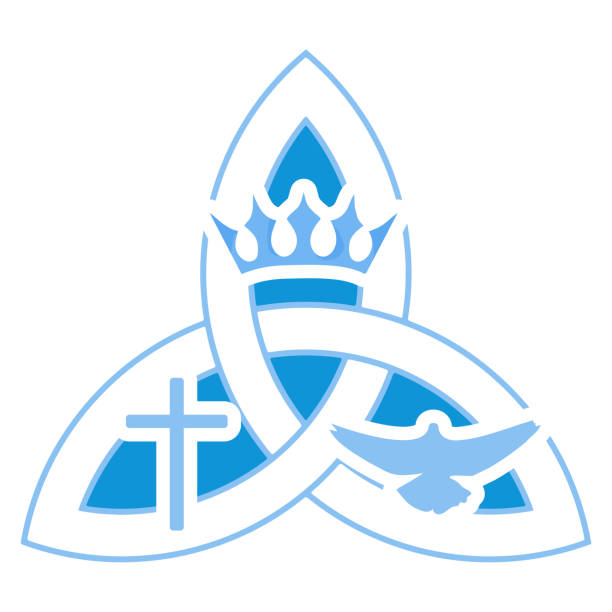When exploring the Catholic Christian faith, one word sums up the entire faith and is the core belief from which all other Catholic dogma flows: the Trinity. Catholics acknowledge this Trinity by making the sign of the cross, from head to chest, and then from shoulder to shoulder: Father, Son and Holy Spirit. This paper briefly explains why the Trinity is crucial to Catholic belief, as well as how each Person in the Trinity is distinct, yet all from the same substance – all the same God (Catechism of the Catholic Church #254 – 255).
That said, where does the Trinity begin? It begins with God, the Father. The term “father”, in this context, means that God has a divine relationship with all His creation. And through covenants established with human beings, starting in ancient Israel, God revealed Himself as a father figure who is not only the Creator of all things within and outside of the Universe, but that He is also the very definition of goodness and love (CCC #238 – 239). Therefore, God’s primary purpose for creation has been to share in His love and goodness, to be an eternal part of an equally eternal family.
From that goodness and love, God has also revealed His saving grace, manifested through the other two, distinct persons of the Trinity: the Son, Jesus Christ; and the Holy Spirit. Together, the Father, Son, and Holy Spirit work as one, yet have distinct purposes: The Father draws humanity to grace through his Son, Jesus. In turn, Jesus came down from Heaven as God incarnate – as both God and man – so that we could fully know God’s grace, goodness, and love for humanity.
And to ensure that we humans are continually guided toward the truth of God’s grace, the Holy Spirit has been our eternal guide in revealing and understanding God’s word, accepting grace, and showing us how to build and nurture a divine family relationship with God (CCC #243 – 245).
This reminds me of a video I recently watched — and recommended on my YouTube channel — by one of my favorite Catholic theologians, Brant Pitre: In the video, Pitre explains how St. Paul teaches, in Ephesians 4, that the Church is unified invisibly, bodily, eschatologically, Christologically, sacramentally – and, ultimately, all through the Trinity: Father, Son, Holy Spirit.
For this short reflection, I am skipping a bulk of how Pitre threads in all above aspects of unity (though may be that may be for another reflection!). Nevertheless, the main point, as Pitre well summarizes, is that all unity in our faith is derived from the unity of the Trinity.
Which brings me to our connection with the triune God: I think about how St. Thomas Aquinas essentially describes God: as the very essence of to be, to know, and to guide. Or another way to put it: To be = we learn what being is by understanding that God, the Father is being itself. Then, to know = we come to understand God through his covenants with humanity – especially His ultimate covenant: our salvation through Jesus Christ. And to guide = our receiving the Holy Spirit to grow our relationship with God and help bring his kingdom to fruition.
In my prayers, I ask that my understanding of, and connection with, our triune God is as thorough and balanced as possible. What’s more, I must worship equally and honor all three distinct Persons in the Trinity.
And since becoming Catholic again in 2014, God’s grace – through the power of the Trinity — is crucial to my spiritual journey. I am thankful to God, the father, for drawing me again to Christ; for Christ’s sacrifice and resurrection for my salvation; and for the Holy Spiriting continually paving the path to a Divine relationship.
